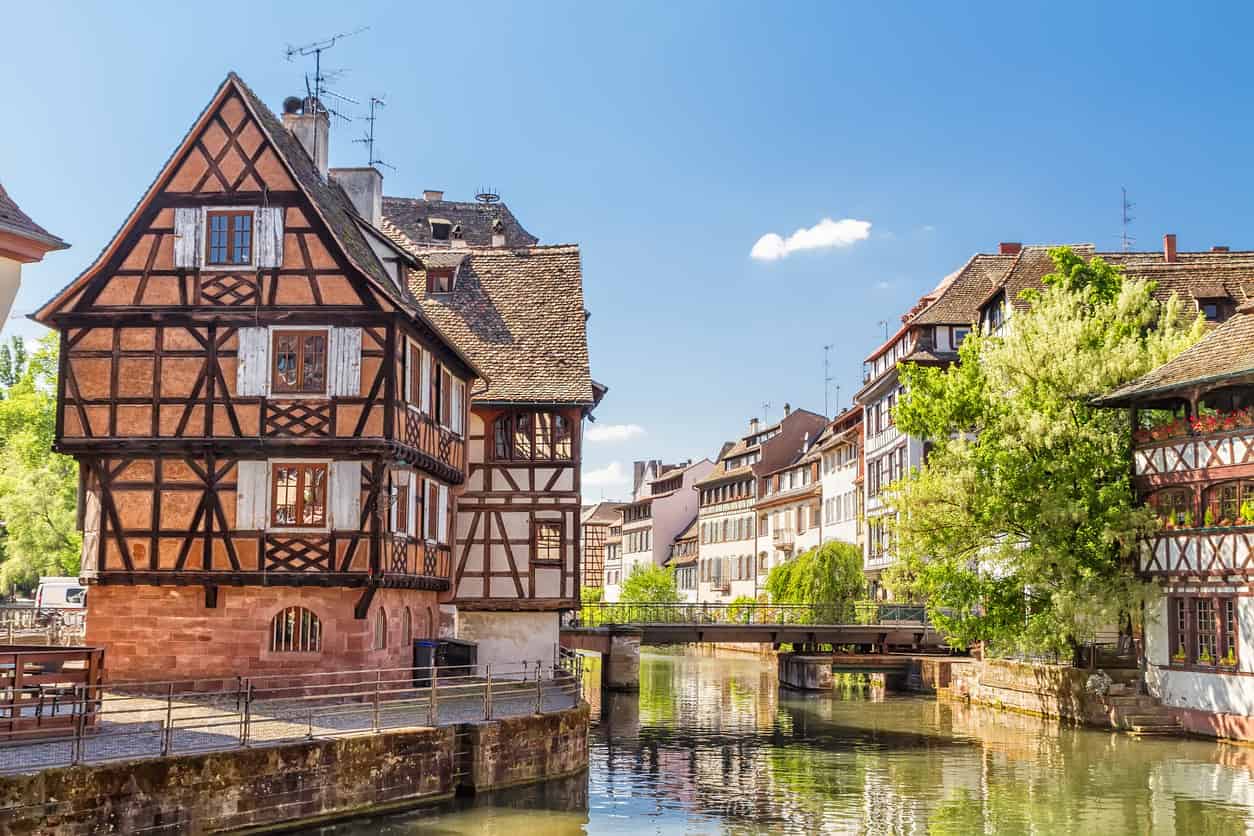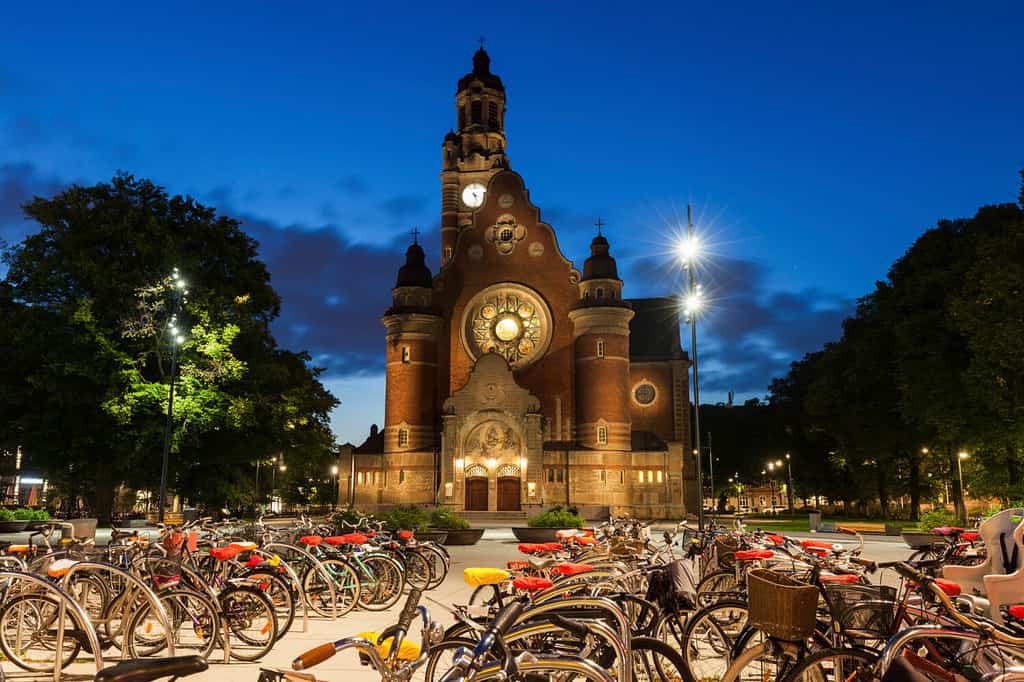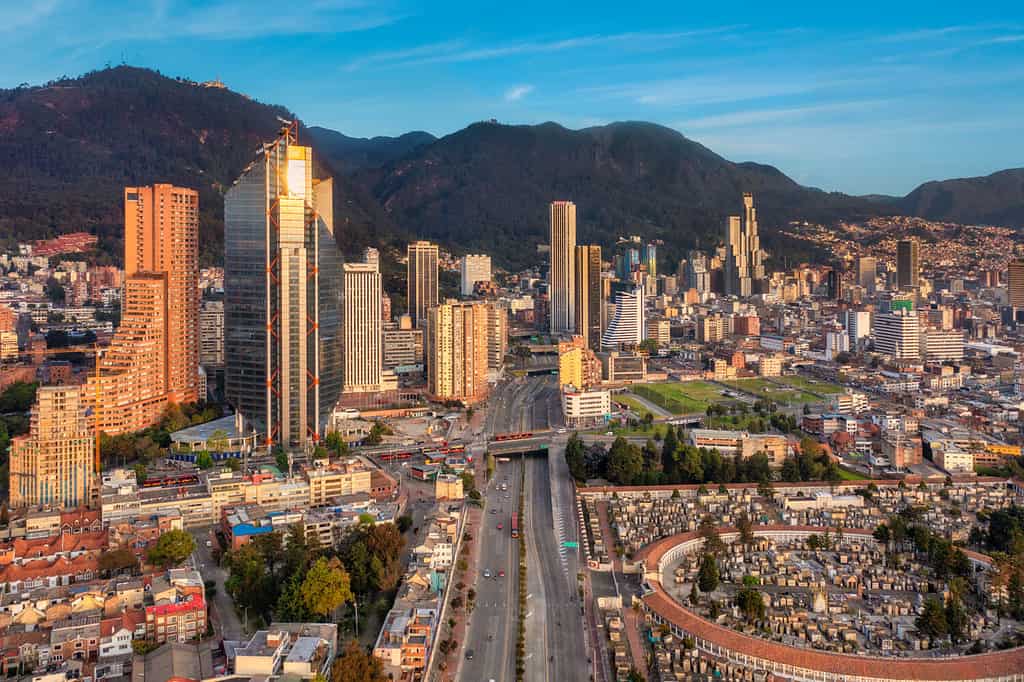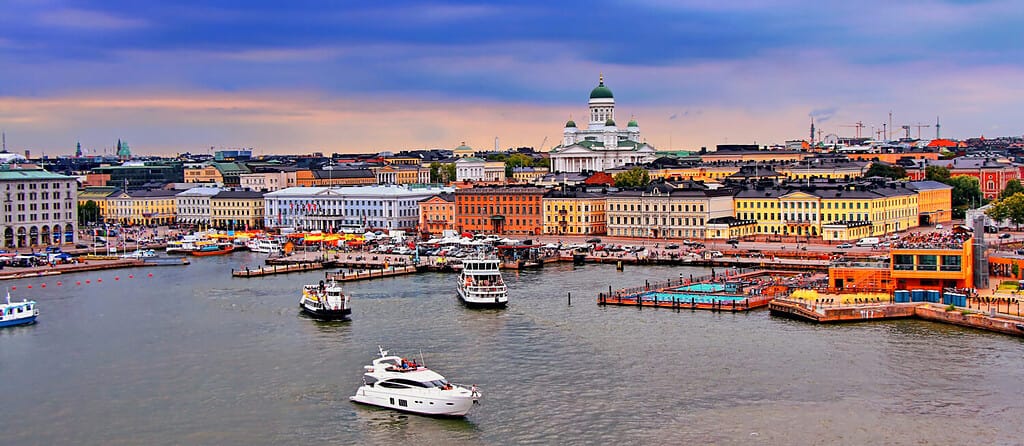In a world increasingly concerned with sustainability and the promotion of healthy living, the humble bicycle has become a symbol of progress. Its quiet efficiency and zero emissions have transformed cities worldwide into havens for cyclists. From dedicated bike lanes to thriving bike-sharing programs, the world’s most bike-friendly cities are leading the way in reshaping urban landscapes for the better. In this listicle, we’ll embark on a journey to explore the top ten cities that have embraced cycling as a way of life, fostering a harmonious coexistence between people and their urban environments. These cities not only boast remarkable bike infrastructure but also offer an insight into the unique lifestyles of their residents, where pedal power reigns supreme. Join us as we discover the top cycling-friendly cities and why they’ve become such shining examples of sustainable and active living.
1. Amsterdam, Netherlands
Amsterdam is the crown jewel of bike-friendly cities, celebrated for its unwavering dedication to cycling. The city’s flat terrain, compact layout, and pedestrian-friendly streets make it the perfect canvas for cyclists to navigate with ease. Amsterdam offers dedicated bike lanes that crisscross the city, seamless integration with public transport, and even traffic lights synchronized to cater to the needs of cyclists. Over 60% of Amsterdam residents in this picturesque city make daily trips on two wheels. This incredibly high percentage reflects a deep-rooted cycling tradition that is deeply ingrained in the Dutch way of life.
In Amsterdam, the lifestyle of its residents is inherently intertwined with cycling. Bicycles are not just a means of transport. They are an expression of the city’s commitment to sustainability and active living. From families cycling to school and work to tourists leisurely exploring the city, Amsterdam’s streets are teeming with cyclists. The prevalence of bike parking and bike-sharing programs ensures that everyone can easily join the ranks of this eco-conscious, health-oriented community. For the people of Amsterdam, cycling isn’t merely a way to get from point A to point B. It’s a reflection of their values and an embodiment of the city’s commitment to reducing emissions. Ultimately, it’s a way of fostering a healthier urban environment.

Over 60% of Amsterdam residents in this picturesque city make daily trips on two wheels.
©Kai D. Wright/iStock via Getty Images
2. Copenhagen, Denmark
Copenhagen is the epitome of a bike-friendly city, where cycling isn’t just a mode of transportation but a way of life. The city’s dedication to cycling is evident in its extensive network of bike lanes, dedicated cycling bridges, and innovative urban planning. The flat terrain, compact layout, and continuous efforts to improve cycling infrastructure have made Copenhagen a model for bike-friendly cities worldwide. Approximately 49% of Copenhagen residents’ trips are completed on bicycles as the primary mode of transportation. This drastically reduces traffic congestion and contributes to the city’s low carbon emissions.
Copenhagen’s residents embrace a lifestyle that revolves around cycling. With well-designed bike lanes that provide easy access to work, schools, and recreational areas, it’s no wonder the city has become a haven for cyclists. The bike culture extends to all age groups, from children riding to school to professionals commuting to work, creating a vibrant and active atmosphere. The city’s commitment to sustainability and active living is reflected not only in the extensive cycling infrastructure. It’s also evident in the widespread availability of bike-sharing programs. Ultimately, these ensure that everyone can partake in this eco-friendly mode of transportation.

The flat terrain, compact layout, and continuous efforts to improve cycling infrastructure have made Copenhagen a model for bike-friendly cities worldwide.
©Vlad Teodor/Shutterstock.com
3. Utrecht, Netherlands
Next, Utrecht, situated in the Netherlands, is a true cyclist’s haven, and the city’s commitment to biking is palpable. With a flat and compact layout, Utrecht is naturally conducive to cycling. It offers an extensive network of bike lanes, with cycling bridges that span scenic canals. The city’s bike-friendly approach includes well-maintained paths, traffic-calming measures, and state-of-the-art bike storage facilities. Approximately 33% of Utrecht’s population chooses the bicycle as their primary mode of transportation. Such a high percentage makes the city one of the most bike-friendly cities in the world.
The lifestyle of the city’s residents revolves around the bicycle. Moreover, it’s not uncommon to see people of all ages and backgrounds pedaling their way through the city. Utrecht’s bike-centric culture encourages a healthy and sustainable lifestyle. Furthermore, the city’s strategic urban planning has transformed it into a shining example of what a truly bikeable city can be. Here, cycling is not just a means of getting around but an essential part of daily life.

Utrecht’s bike-friendly approach includes well-maintained paths, traffic-calming measures, and state-of-the-art bike storage facilities.
©bbsferrari/iStock via Getty Images
4. Strasbourg, France
Strasbourg, situated in northeastern France, has earned its reputation as a bike-friendly city through careful planning and commitment to sustainable transportation. The city’s enchanting medieval streets, along with its extensive network of over 500 kilometers of dedicated bike paths, make Strasbourg a cyclist’s dream come true. The comprehensive infrastructure includes bike-friendly bridges and traffic-calming measures that ensure a safe and enjoyable riding experience. About 16% of the working population in Strasbourg chooses to commute by bicycle. This showcases the success of the city’s bike-friendly initiatives.
The lifestyle in Strasbourg reflects its cycling culture, with residents of all ages embracing this eco-conscious mode of transportation. Whether it’s students riding to school, professionals pedaling to work, or families enjoying leisurely bike rides, the city’s streets are alive with the buzz of bicycles. The availability of bike-sharing programs and well-maintained cycling paths create an environment that encourages people to embrace a healthier and more environmentally friendly way of life.

The lifestyle in Strasbourg reflects its cycling culture, with residents of all ages embracing this eco-conscious mode of transportation.
©iStock.com/g215
5. Malmö, Sweden
Next, Malmö, a city in southern Sweden, has made impressive strides in becoming one of the world’s most bike-friendly urban centers. Its flat terrain and a well-connected network of bike lanes make cycling a practical and enjoyable way to get around. The city has invested heavily in cycling infrastructure, offering cyclists their own lanes, traffic signals, and even bike-friendly public transportation. Around 30% of Malmö’s population opts for bicycles as their primary mode of transportation. This further emphasizes the city’s strong commitment to sustainable mobility.
The lifestyle of Malmö’s residents reflects a deep appreciation for cycling. It’s a way to connect with nature, promote healthy living, and reduce environmental impact. People of all ages can be seen pedaling through the city’s parks, along its waterfront promenades, and on dedicated bike paths. The city’s commitment to sustainability is reinforced by the availability of bike-sharing programs and the integration of cycling into everyday life. Malmö’s cycling culture encapsulates the idea that urban areas can be both eco-friendly and health-oriented. This, in turn, creates a vibrant and active community.

Malmö’s cycling culture encapsulates the idea that urban areas can be both eco-friendly and health-oriented.
©Henryk Sadura/Shutterstock.com
6. Bogotá, Colombia
Bogotá, the bustling capital of Colombia, has transformed into a beacon of hope for cycling in South America. The city’s notable initiative, Ciclovía, where streets are closed to cars and opened to cyclists every Sunday, has garnered international acclaim. This event alone attracts over two million participants weekly. The city features an impressive network of dedicated bike lanes. Moreover, approximately 7% of its population chooses the bicycle as their preferred means of transportation. Its urban planning has adapted to reduce traffic congestion and improve air quality.
The lifestyle in Bogotá is deeply rooted in cycling. The city’s people have embraced the bicycle as a means of promoting physical fitness and community building. From commuters using bicycles for daily travel to families and friends enjoying leisurely rides along the city’s routes, cycling is an integral part of life in Bogotá. The city’s commitment to creating a greener and healthier environment is evident in its forward-thinking cycling policies and urban planning. Bogotá’s emergence as a cycling-friendly city demonstrates that sustainable living can be successfully integrated into an urban setting. All this is possible while improving the overall quality of life for its residents.

From commuters using bicycles for daily travel to families enjoying leisurely rides along the city’s routes, cycling is an integral part of life in Bogotá.
©Santiago Robayo Escobar/Shutterstock.com
7. Montreal, Canada
Next up, Montreal, a vibrant city in the Canadian province of Quebec, stands out as a cycling haven in North America. The city’s commitment to cycling is evident in its extensive network of bike paths, including the popular Lachine Canal path. Montreal‘s unique geography, with its island location and relatively flat terrain, lends itself to cycling. The city’s investment in cycling infrastructure is highlighted by dedicated lanes, bike-sharing programs, and the iconic BIXI bike-sharing system. It is worth noting that this system was the first of its kind in North America. Approximately 3% of Montreal’s population chooses bicycles as their primary mode of transportation, promoting a healthier and greener lifestyle.
The lifestyle in Montreal reflects its commitment to cycling. Here, a diverse range of residents, from students to professionals and families, embrace the bicycle as a means of transport. The city’s cycling culture extends beyond commuting, with many enjoying leisurely rides through parks and along picturesque routes. Montreal’s passionate cyclists and commitment to sustainable living have contributed to the city’s reputation as a North American cycling paradise.

Montreal’s unique geography, with its island location and relatively flat terrain, lends itself to cycling.
©Tomas Kulaja/Shutterstock.com
8. Helsinki, Finland
Helsinki, the vibrant capital of Finland, has become a shining example of a bike-friendly city. In Helsinki, cycling is an integral part of daily life. The city’s commitment to cycling is evident through a well-structured network of bike lanes, bike-sharing programs, and measures to ensure the safety of cyclists. Helsinki’s flat terrain and compact layout create a convenient and efficient environment for cyclists. The city’s dedication to sustainability and reducing emissions is demonstrated by the availability of dedicated bike lanes and bike racks throughout urban areas. What’s more, the city boasts a 10 euro/week bike-share program that is a hit with locals. Approximately 10% of the city’s population chooses to cycle as their primary means of transportation. This reflects Helsinki’s success in promoting a green and active lifestyle.
Whether it’s commuting to work, exploring the city’s picturesque waterfront, or enjoying leisurely rides through its parks, cycling is deeply rooted in the culture of Helsinki. The city’s emphasis on an eco-conscious lifestyle, along with a strong commitment to urban planning, has fostered a dynamic cycling community. Helsinki’s residents are not just cyclists. They are also stewards of a greener and healthier urban environment. Ultimately, this idea exemplifies the harmonious coexistence of people and bicycles in this charming Nordic capital.

Approximately 10% of the city’s population chooses to cycle as their primary means of transportation. This reflects Helsinki’s success in promoting a green and active lifestyle.
©elina/Shutterstock.com
9. Tokyo, Japan
Tokyo, the bustling capital of Japan, may not be the first city that comes to mind when you think of cycling. However, it is steadily making its mark as a bike-friendly urban center. While the cityscape is known for its vertical architecture, Tokyo‘s relatively flat terrain, compact layout, and bike-friendly public transportation create an environment where cycling is practical and efficient. The city has seen a surge in cycling lanes and bike-sharing programs. This makes it easier for residents to incorporate bicycles into their daily routines. Tokyo’s efforts to reduce emissions and promote a healthier lifestyle are aligning with the growing number of residents choosing to cycle.
In Tokyo, cycling is not only a mode of transport. Furthermore, it is a symbol of the city’s commitment to sustainability and reducing its carbon footprint. Residents of all ages navigate the city on bicycles, from students cycling to school to professionals pedaling to work. Tokyo’s deep-rooted culture of respect and etiquette extends to cycling, making it a safe and convenient option for getting around.

In Tokyo, cycling is not only a mode of transport. It is a symbol of the city’s commitment to sustainability and reducing its carbon footprint.
©ESB Professional/Shutterstock.com
10. Munich, Germany
Finally, Munich, nestled in the heart of Bavaria, Germany, is a prime example of a city that has fully embraced cycling as a sustainable mode of transportation. Munich’s well-planned infrastructure and commitment to cycling make it a haven for cyclists. The city features dedicated bike lanes and paths, providing safe and efficient routes for cyclists. Munich also offers bike-sharing services and bike-friendly public transportation. This makes it much easier for residents to combine cycling with other modes of transit. Approximately 17% of the city’s trips are on bicycles, reflecting Munich’s dedication to creating a healthier and eco-friendly urban environment.
The lifestyle of Munich’s residents is intrinsically tied to cycling. The city’s flat terrain and scenic surroundings make it an ideal place for cyclists of all ages and backgrounds. Whether it’s commuting to work, running errands, or enjoying leisurely rides through the city’s parks, cycling is an integral part of daily life. Munich’s commitment to sustainability and a healthy way of living is not only apparent in its cycling infrastructure. It’s also visible in its efforts to encourage residents to embrace the bicycle as a means of promoting a greener and more active urban lifestyle.

Approximately 17% of the city’s trips are on bicycles, reflecting Munich’s dedication to creating a healthier and eco-friendly urban environment.
©Altrendo Images/Shutterstock.com
Summary of the 10 Most Bike-Friendly Cities in the World
These cities represent the pinnacle of bike-friendliness, fostering sustainable and healthy lifestyles while minimizing traffic congestion and emissions. Whether you’re an avid cyclist or just enjoy a leisurely ride, these urban centers offer the ideal environment for two-wheeled exploration.
| Rank | City |
|---|---|
| #1 | Amsterdam, Netherlands |
| #2 | Copenhagen, Denmark |
| #3 | Utrecht, Netherlands |
| #4 | Strasbourg, France |
| #5 | Malmö, Sweden |
| #6 | Bogotá, Colombia |
| #7 | Montreal, Canada |
| #8 | Helsinki, Finland |
| #9 | Tokyo, Japan |
| #10 | Munich, Germany |
Thank you for reading! Have some feedback for us? Contact the AZ Animals editorial team.







